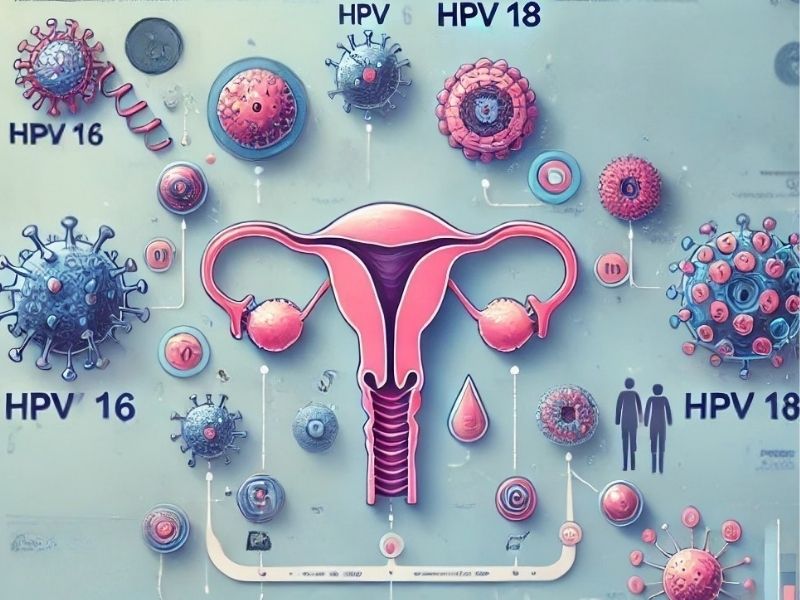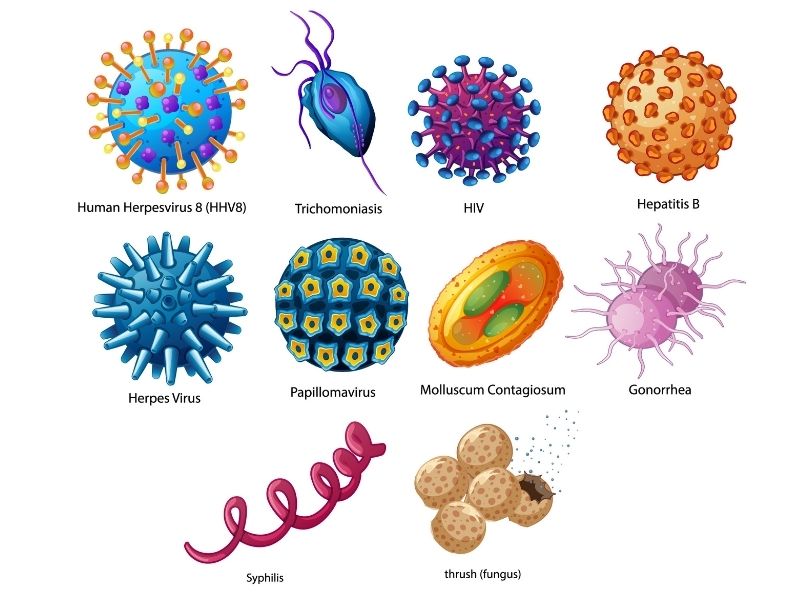Human Papillomavirus (HPV) is a group of viruses that cause infection of the skin and mucous membranes. This virus, of which there are more than 200 known types, is usually sexually transmitted. However, not only sexual contact but also skin-to-skin contact can lead to HPV infection. While most HPV infections go away on their own without symptoms, some types can cause serious health problems.
There are two main categories of HPV: low-risk and high-risk types. Low-risk types usually cause warts, while high-risk types are associated with cancer. Transmission of the virus does not require full sexual intercourse; any contact in the genitals can spread the infection. In addition, HPV infection develops more easily in individuals with weak immune systems and can remain active for a long time.
It is therefore important to know about HPV to increase individual precautions and reduce the risk of infection. Early detection and preventive measures should be taken to reduce the prevalence of HPV.
Low Risk HPV Types
Low-risk HPV types usually cause warts on the skin or genitals and are unlikely to cause cancer. The most common low-risk types include HPV 6, HPV 11, HPV 1, HPV 2 and HPV 4.
HPV 6 and HPV 11 are the most common low-risk HPV types that cause the majority of cases of genital warts. These warts appear as small, skin-colored blisters and can sometimes itch or cause discomfort. They are usually painless, but large or widespread warts can interfere with sex life. HPV 1, HPV 2 and HPV 4 cause common warts on the soles of the hands and feet. Warts, especially on the soles of the feet, can cause discomfort when walking.
These low-risk HPV infections are often cleared by the immune system. However, in some cases warts require treatment.

Treatment of Low Risk HPV Types
Various methods are used to treat warts caused by low-risk HPV strains. In the first stage, topical creams prescribed by the doctor are used. These creams ensure that the warts shrink and disappear over time. The application period is usually a few weeks and requires regular use.
Cryotherapy (freezing method) is preferred when faster results are desired. In this method, the warts are frozen with liquid nitrogen to make them fall off. The procedure is usually completed in a few sessions. Laser treatment is an effective method for larger or common warts. Using laser beams, the warts are burned and the tissues are cleaned.
Another effective method is electrocauterization (burning), which uses electric current to destroy warts. Surgical intervention may be required for resistant and recurrent warts. In this procedure, the warts are cut out under local anesthesia.
Despite all treatment methods, the HPV virus may remain in the body and warts may recur. Therefore, regular medical check-ups are recommended after treatment. Strengthening the immune system and paying attention to hygiene rules are important to prevent recurrence of the infection.
High Risk HPV Types
High-risk HPV types are viruses that can often cause cancer and are most commonly associated with cancers of the cervix, anus, penis, throat and tongue. HPV 16 and HPV 18 are responsible for about 70% of cervical cancer cases. These strains cause genetic changes in cells, triggering abnormal cell growth. If the immune system fails to clear the virus, precancerous cells can form that can develop into cancer over many years.
In addition to HPV 16 and HPV 18, HPV 31, HPV 33, HPV 45, HPV 52 and HPV 58 are also at high risk. These strains have been linked to cancers of the cervix, anus, anus, vagina, vulva and head and neck. HPV 31 and HPV 33 are particularly associated with the development of cervical cancer, while HPV 52 and HPV 58 are also known to cause cellular mutations.

Treatment of High Risk HPV Types
High-risk HPV strains can lead to cellular changes and precancerous lesions over time. Early detection and appropriate treatment of such changes is critical to prevent the disease from progressing. In this process, different treatment methods can be applied to prevent the spread of abnormal cells.
Regular screening and follow-up are of great importance for early diagnosis. PAP smear test and HPV DNA test can detect abnormal cells in the cervix at an early stage.
LEEP (Loop Electrosurgical Excision Procedure) is used to treat precancerous lesions. In this procedure, abnormal cells are removed from the cervix with the help of an electrical loop. For deeper and larger abnormal tissues, conization is applied. In this procedure, the diseased tissue in the cervix is removed in the shape of a cone.
Laser ablation is preferred for smaller cellular changes. This method destroys the precancerous cells caused by HPV by burning them with a laser. If the disease has progressed and turned into cancer, surgical intervention, radiotherapy or chemotherapy is applied during the treatment process.
The success rate in the treatment of HPV-related cancers depends on early detection of the disease. Therefore, regular check-ups and early intervention play a critical role in preventing the disease from progressing.







